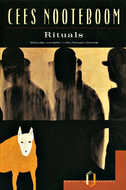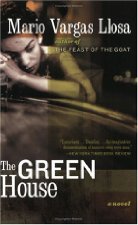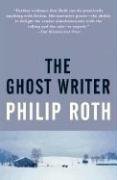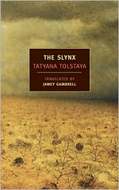
Nothing retains its form…
Austrian novelist Christoph Ransmayr is the recipient of at least a dozen European literary awards (including the prestigious Franz Kafka prize in ‘95) as well as holding an Elias Canneti Fellowship. I only picked up his third novel, The Last World, as a follow up to my recent delving into Ovid’s Metamorphoses, as I had otherwise no intention of straying from my reading strictly older classic literature in an effort to ‘fill in the gaps’ of my reading background. I had long wanted to read a Ransmayr work, and understood this particular novel was premised on the roman poet’s epic that was still fresh in my memory…
A windswept aside:
In my humble yet over privileged opinion, to appreciate the other five or so levels beyond the storyline, a first time reader should NOT read this without having read and have at least a basic understanding of Ovid’s Metamorphoses. A contemporary of Virgil, Ovid’s tour de force condensed greco-roman mythic history into 15 tightly constructed books retelling the ages of man from creation to the then- contemporary Augustan Empire. The poem has resonated through the ages, as references to it are found from Shakepeare, Chaucer and Dante to contemporary literature (see review of Cees Nooteboom’s The Following Story in this blog). Ransmayr has provided an ‘Ovidian Repertory’ in the back of the novel which is helpful to reference the novel’s characters within the frame of the Ur text, but that said, the main mechanisms and structures of the novel are a subtext and they form the sometimes ironic, and often elegiac interplay against its backdrop. The overarching irony of the novel is so big, its easily missed.
Viscera…
On the plot level it’s a literary detective tale, as the protagonist Cotta, ostensibly attempts to follow the leads to track the banished Roman Poet Ovid to his exiled home on Tomis (modern day Romania on the Black Sea) where he has disappeared. The reader soon realizes that the novel’s Roman Empire is not set in the beginning of the first millennium. The historical identifiers are few, just enough to unmoor the reader’s (and the story’s) place in time. In Ransmayr’s text Ovid manages to burn the manuscript of his epic work upon learning that Augustus issued a decree to banished him, before the public had ever read it.
One of the more interesting skeletons…
On the basic narrative level the story is immediately captivating. In the John Woods translation the prose is to savor and read aloud. As in Ovid’s text, Ransmayr makes extensive use throughout of the rhetorical device of ekphrasis in an attempt to dramatically reveal and define an objects essence through overlaying different mediums. The fictive present is a vague foreground against the backdrop of the ancient past. The resulting sense of historical depth of perspective is enigmatic and lends to the sense of dislocation.
The text itself is a form of metamorphosis, or transformation. The many transformations of human characters into animals or stone in Ovid’s epic are largely in the form of punishment as deemed fit by the capricious Roman gods. In the novel’s world, the gods are nowhere to be found, except in the form of grotesques. Ovid’s work of linked mini-epics and tales were all well known to his audience of the time, they understood his many ironic twists and adapted versions of the stories of gods whimsically toying with humankind’s heroic figures. In The Last World, the characters and their stories from the Metamorphoses exist in the quotidian level of Tomi, yet ironically they have no context, they are totally deprived of mythic proportions. Tireseas is the local butcher for example, and he is (as in Ovid’s work) married to Procne. His being a butcher is a pun on the Pythagorus section near the end of the Metamorphosis where he elucidates why the eating animal flesh is metaphysically wrong as it negates the possibility of reincarnation and is equated with basic greed…
Of the sweeping winds of time…
As the tale unfolds the mystery of Nasso’s (derived from the poet’s middle name) disappearance, the readers as well as the protagonist Cotta’s sense of alienation and isolation grows and builds. Cotta’s search for Nasso becomes a quest also for his own identity and its place in ‘his story’. His displacement in this world is as a much a form of exile as the poets. The world of this exile is never stable, it is in a state of constant flux and chaos: nature has gone amok, and somehow the normal cycle of seasons have accelerated and are out of balance. The inhabitants we learn later are all exiles, and are at the mercy of the constant upheaval of the four elements: Air, Earth, Fire and Water. These are symptomatic of the transformations that are taking place in the storyworld.The cycle is not an eternal one however, this is not just another phase in and endless chain, this is indeed, the Last World, the age of Iron as the last age of the Four Ages of Man as listed in the first book of Ovid’s work. The town of Tomi in the novel is always referred to as “the city of Iron”.
Since paradise ( the“golden age of man”) has been irrecoverably lost in time and the place, the question becomes can it at least be held in the imagination, through the herculean efforts of the artist. Can the names in a reality recorded create a context for the exile, a last refuge, a Last World? There is a prophetic and haunting scene early in book 2 where Cotta is led by Pythagorus through the remote ruins of the poets last stand in the mountain heights of Trachila and by candlelight finds what he gathers to be the epilogue from The Metamorphoses etched in partially buried stone hidden under a living carpet of slugs:
I HAVE COMPLETED A WORK
THAT WILL WITHSTAND FIRE
AND IRON
EVEN THE WRATH OF GOD
AND ALL CONSUMING TIME
WHENEVER IT WILL
LET DEATH NOW COME
HAVING ONLY MY BODY
WITHIN ITS POWER
AND END MY LIFE
BUT THROUGH THIS WORK
I WILL LIVE ON AND
LIFT MYSELF HIGH ABOVE THE STARS
AND MY NAME
WILL BE INDESTRUCTIBLE
There is no question Publius Ovidius Naso’s epic monument succeded, while
Ransmayr’s Last World may last a good while in its shadow









